
Sage is a popular herb used in a variety of dishes for its aromatic leaves and earthy flavor. Propagating sage from cuttings is a cost-effective way to expand your herb garden, and it is a method that is relatively easy for both beginner and experienced gardeners. This guide will walk you through the steps needed to successfully propagate sage and ensure a healthy, thriving plant.
Why Choose Sage Cuttings?
Propagating sage from cuttings is advantageous because it allows you to clone a plant with desirable traits, such as flavor and vigor. It also speeds up the growing process compared to starting from seeds, which can take longer to germinate and mature. Additionally, using cuttings ensures that the new plant will be identical to the parent plant, preserving its characteristics.
When to Take Sage Cuttings
The best time to take sage cuttings is during the growing season, typically in late spring or early summer. This is when the plant is actively growing, and the cuttings have a higher chance of successful rooting. Avoid taking cuttings during the winter months when the plant is dormant.
Materials Needed
To propagate sage from cuttings, you will need the following materials:
- Healthy sage plant
- Sharp scissors or pruning shears
- Rooting hormone (optional but recommended)
- Small pots or seed trays
- Well-draining potting mix
- Plastic bag or clear plastic dome
Step-by-Step Instructions
Step 1: Select and Prepare the Cutting
Choose a healthy, non-flowering stem from your sage plant. Look for a stem that is about 4-6 inches long and has several leaves. Using sharp scissors or pruning shears, cut the stem just below a node (the point where leaves attach to the stem). Remove the leaves from the lower half of the cutting, as these will be buried in the soil and can rot.
Step 2: Apply Rooting Hormone
While not necessary, applying rooting hormone can increase the chances of successful rooting. Dip the cut end of the sage cutting into the rooting hormone powder, tapping off any excess. This step is particularly useful if you’re new to plant propagation or if you are working with more difficult-to-root varieties.
Step 3: Plant the Cutting
Fill a small pot or seed tray with well-draining potting mix and make a hole in the center using a pencil or your finger. Insert the cutting into the hole, ensuring that at least one node is buried in the soil. Gently press the soil around the cutting to secure it in place.
Step 4: Create a Humid Environment
Cover the pot or tray with a plastic bag or a clear plastic dome to create a humid environment. This helps to prevent the cutting from drying out while it develops roots. Place the covered pot in a warm, bright location, but out of direct sunlight, as this can scorch the cutting.
Step 5: Monitor and Wait
Check the cutting regularly to ensure the soil remains moist but not waterlogged. Mist the cutting with water if necessary to maintain humidity. After a few weeks, gently tug on the cutting. If you feel resistance, roots have begun to form. Once the roots are well-established, you can transplant the cutting to a larger pot or directly into your garden.
Troubleshooting Common Issues
If your sage cutting is not rooting, consider the following common issues: insufficient humidity, overly dry or wet soil, or a cutting taken from a flowering stem. Adjusting these factors can improve your success rate.
Conclusion
Propagating sage from cuttings is a rewarding process that allows you to expand your herb garden with minimal cost and effort. By following these simple steps, you can enjoy an abundance of fresh sage for cooking, medicinal purposes, or simply to enjoy its pleasant aroma in your garden.
Propagating sage from cuttings is a cost-effective way to expand your herb garden. The best time to take sage cuttings is during the growing season, typically in late spring or early summer. Using cuttings ensures that the new plant will be identical to the parent plant, preserving its characteristics. Applying rooting hormone can increase the chances of successful rooting. Cover the pot or tray with a plastic bag or a clear plastic dome to create a humid environment. 
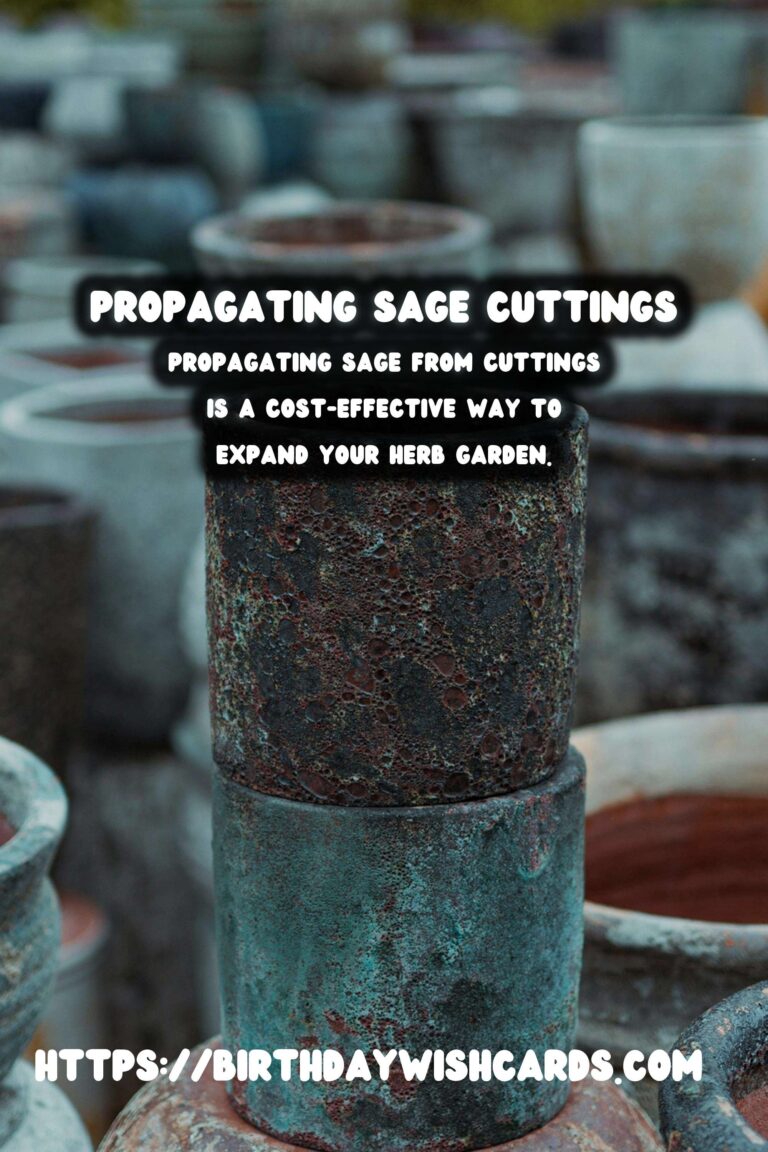

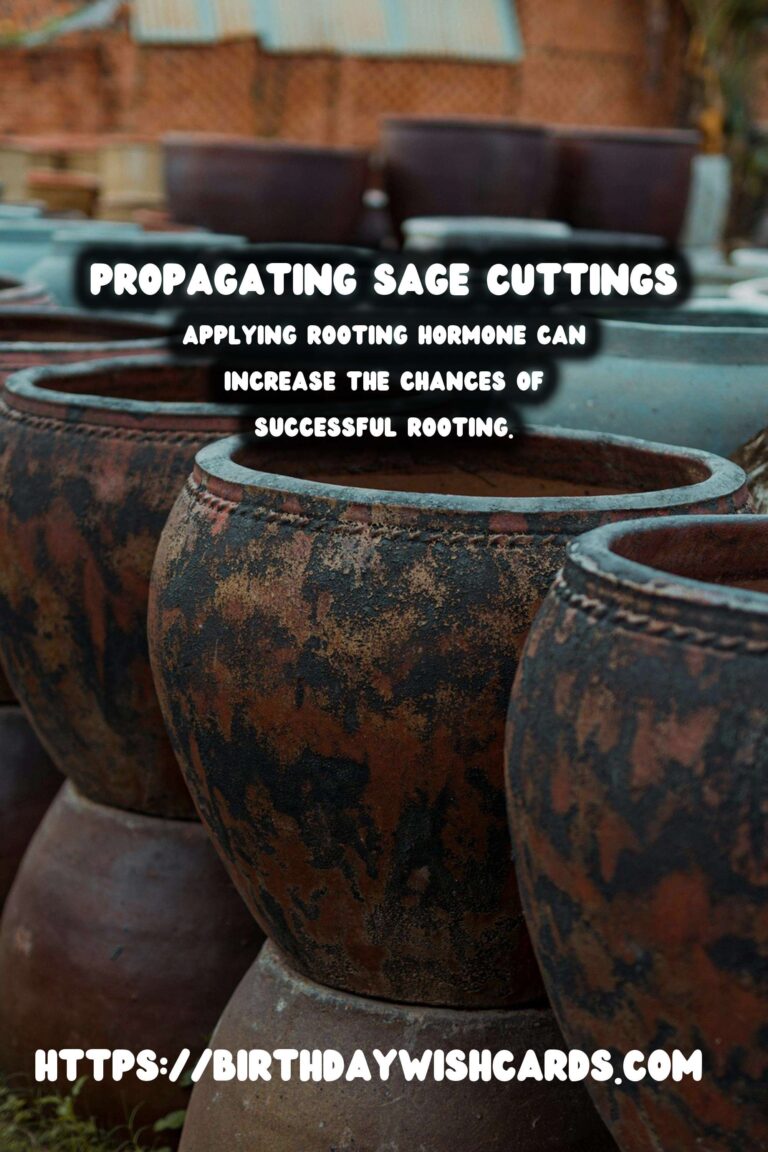

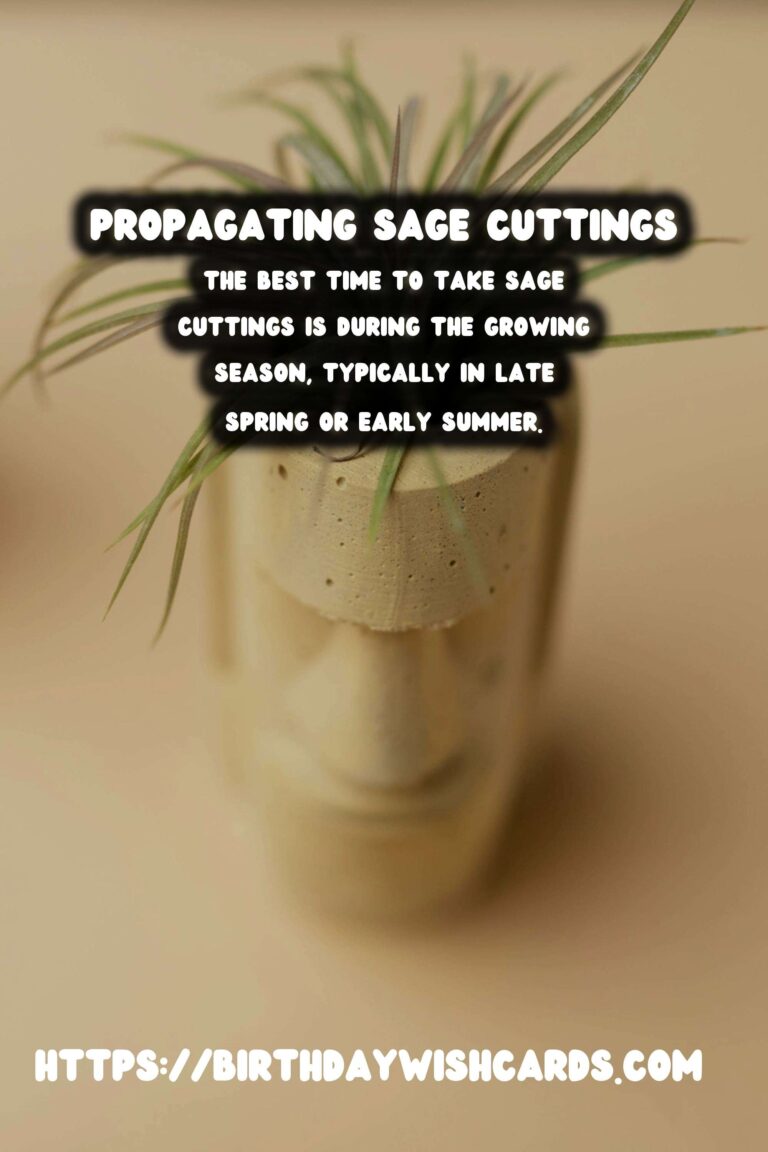
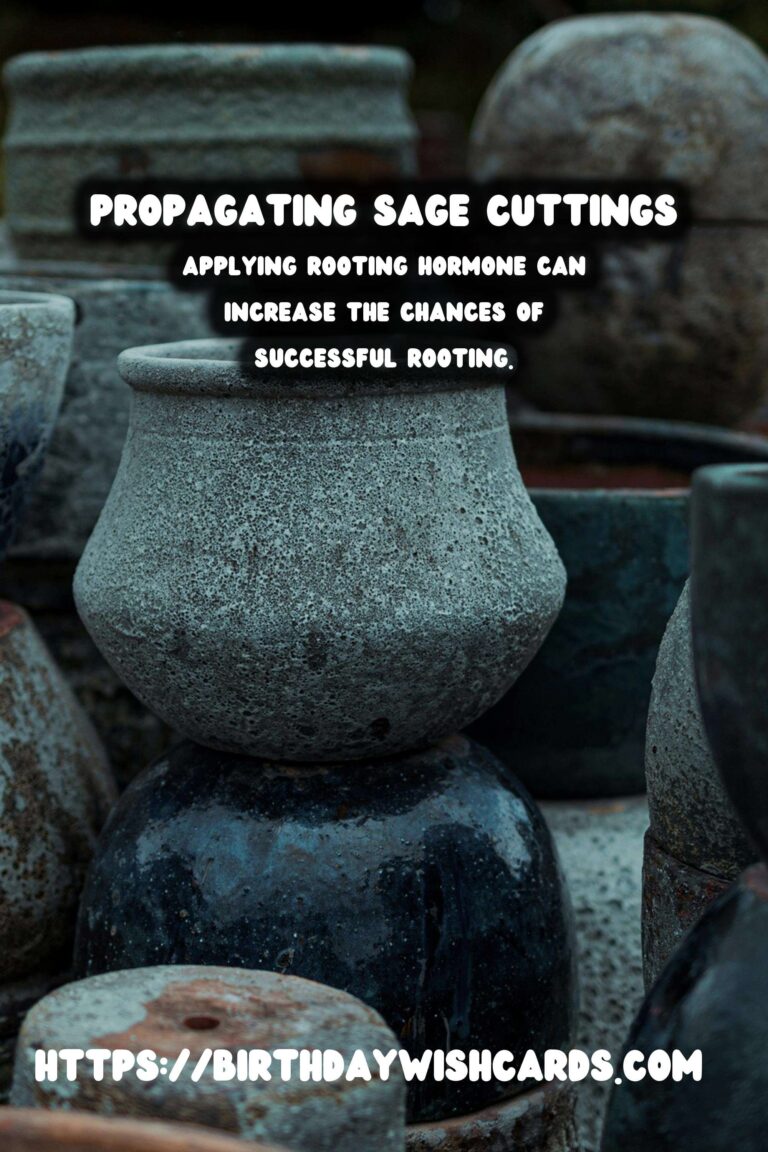
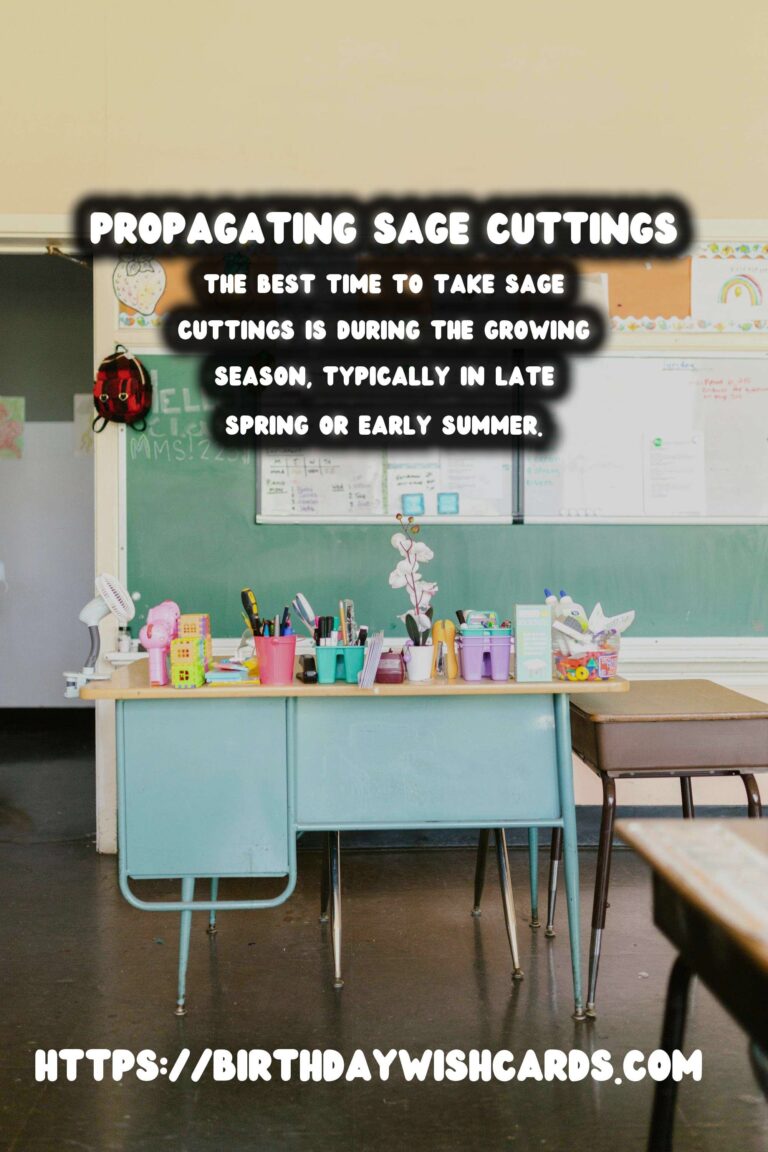
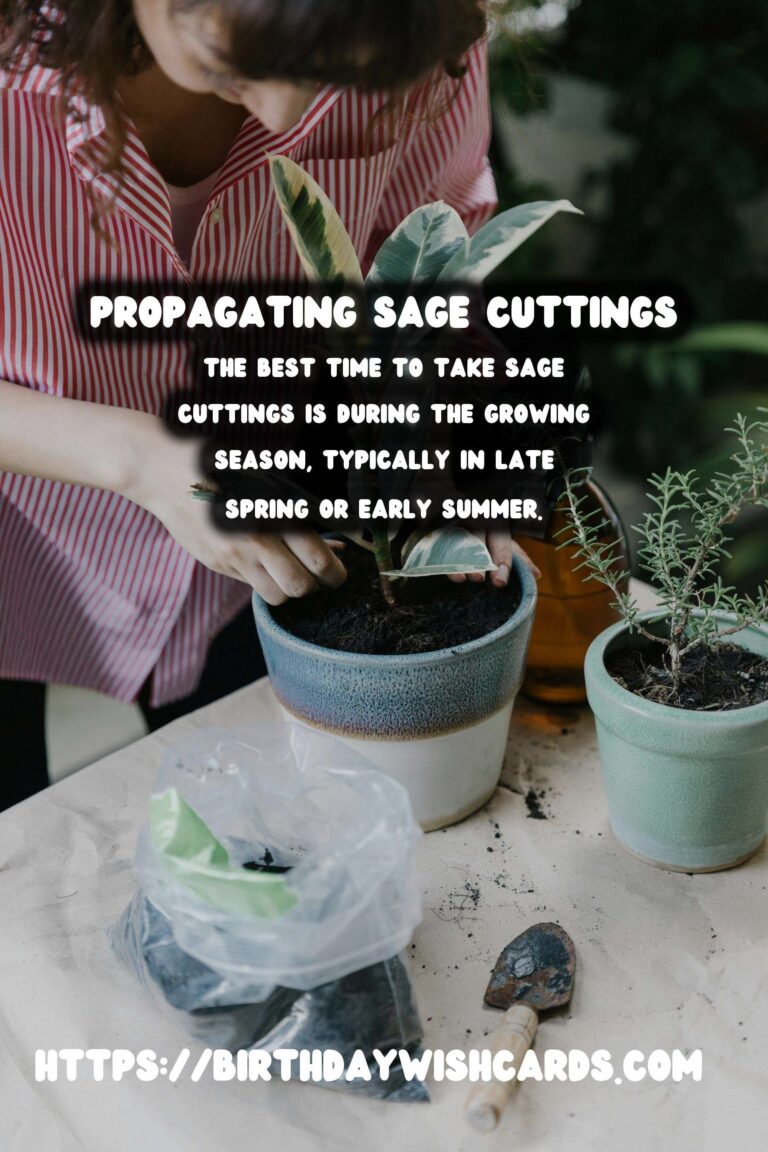
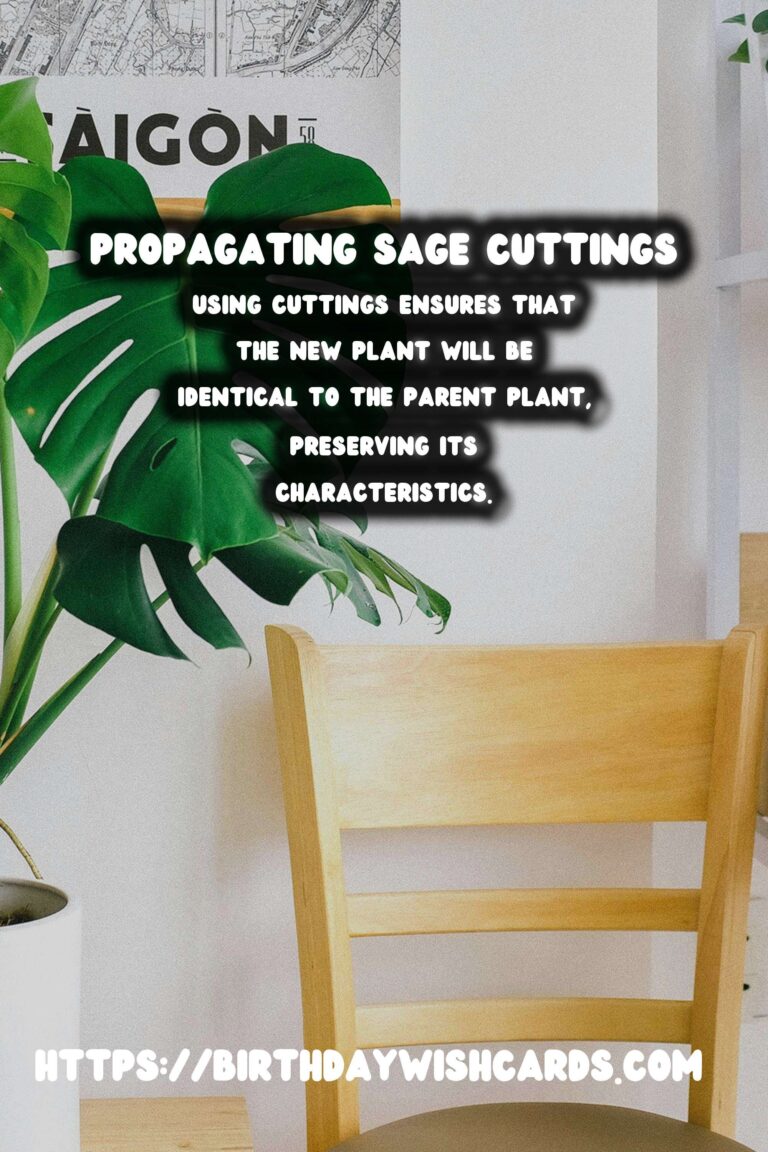
#SagePropagation #HerbGardening #GardeningTips #PlantPropagation



